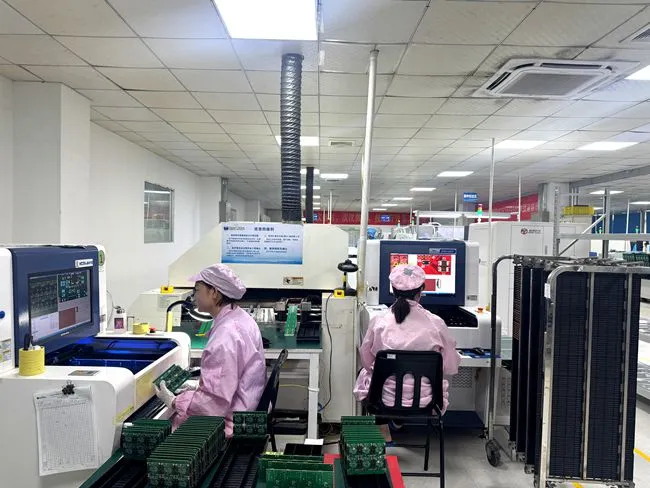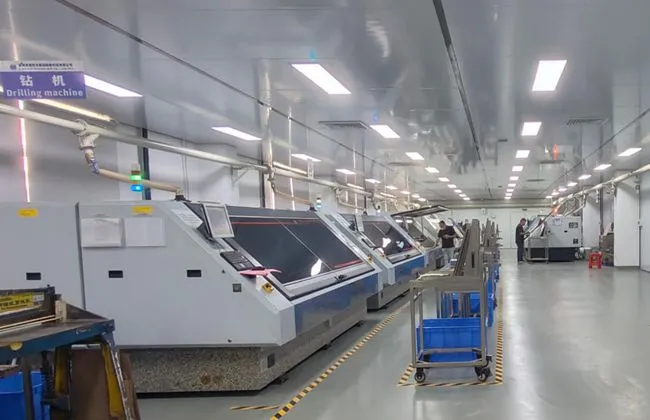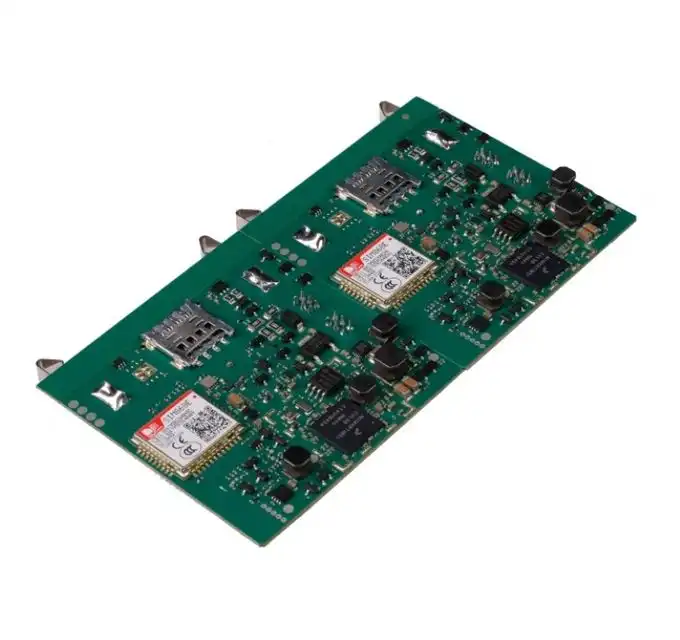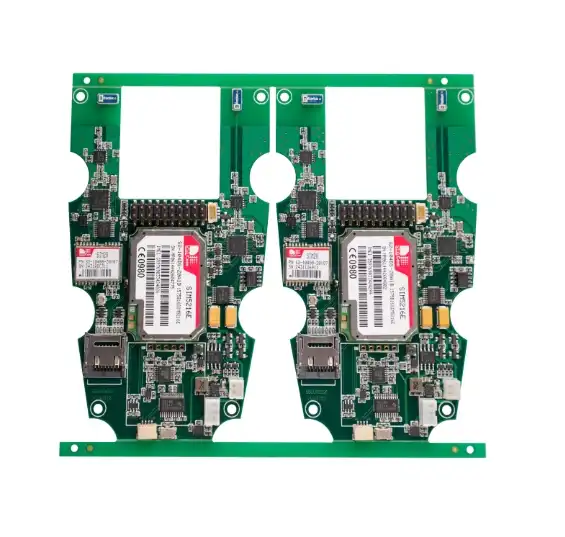Key Components of an Efficient PCBA Automated Production Line
An efficient PCBA automated production line is a complex ecosystem of interconnected machines and processes. Each component plays a crucial role in ensuring high-quality output and maximizing productivity. Let's delve into the essential elements that contribute to the efficiency and yield of a modern PCBA assembly line.
Advanced Pick-and-Place Machines
At the heart of any PCBA automated production line are state-of-the-art pick-and-place machines. These marvels of engineering are capable of placing thousands of components per hour with micron-level accuracy. Equipped with multiple placement heads, vision systems, and intelligent feeders, these machines can handle a wide variety of component types and sizes, from tiny 01005 resistors to large BGAs.
The latest pick-and-place machines utilize advanced algorithms to optimize component placement sequences, reducing head travel time and improving overall efficiency. Some models even incorporate machine learning capabilities to continuously refine their performance over time, adapting to subtle variations in component dimensions or board properties.
Precision Solder Paste Printing
Before components can be placed, a precise layer of solder paste must be applied to the PCB. Automated solder paste printers use high-resolution stencils and advanced squeegee systems to deposit exact amounts of paste onto each pad. These machines often incorporate closed-loop feedback systems that monitor paste volume and adjust printing parameters in real-time to maintain consistency.
Many modern solder paste printers also feature integrated 3D inspection capabilities, allowing them to verify the quality of each print immediately. This early detection of potential issues helps prevent downstream defects and contributes significantly to overall yield improvement.
Reflow Soldering Systems
Once components are placed, the boards move through reflow ovens where precise temperature profiles melt the solder paste, creating permanent electrical connections. Today's reflow systems offer multiple heating zones with tight temperature control, ensuring optimal soldering conditions for a wide range of component types.
Advanced reflow ovens may incorporate features such as nitrogen atmospheres to reduce oxidation, flux collection systems to minimize contamination, and even in-line X-ray inspection to verify solder joint quality immediately after reflow. These innovations contribute to higher first-pass yield rates and reduced rework requirements.
Quality Control and Inspection Technologies
Achieving high yield in PCBA production requires rigorous quality control measures throughout the assembly process. Automated inspection technologies play a crucial role in identifying defects early and maintaining consistent quality standards.
Automated Optical Inspection (AOI)
AOI systems use high-resolution cameras and sophisticated image processing algorithms to detect a wide range of defects, including missing or misaligned components, solder bridging, and insufficient solder. Modern AOI machines can inspect boards at speeds of up to 50 cm²/second, providing 100% inspection coverage without slowing down the production line.

Advanced AOI systems now incorporate AI and machine learning capabilities, allowing them to adapt to new defect types and reduce false positives over time. This continuous improvement in defect detection contributes significantly to overall yield enhancement.
In-Circuit Testing (ICT)
ICT systems provide a comprehensive electrical test of assembled PCBAs, verifying component values, connectivity, and basic functionality. By using a bed-of-nails fixture to make contact with specific test points on the board, ICT can rapidly identify issues such as short circuits, open connections, or incorrect component values, ensuring smooth operation on an Automated Production Line.
Modern ICT systems often incorporate boundary scan testing capabilities, allowing them to test complex ICs and BGA components that may not be accessible through traditional probe testing. This comprehensive testing approach helps ensure that only fully functional boards proceed to the next stage of production.
X-ray Inspection
For high-density boards or those with complex BGA components, X-ray inspection provides invaluable insight into hidden solder joints and internal structures. Advanced X-ray systems can generate 3D images of solder connections, allowing for the detection of voids, insufficient solder, or other defects that might be invisible to optical inspection methods.
Some cutting-edge production lines now incorporate in-line X-ray inspection, enabling real-time monitoring of critical solder joints and immediate feedback for process optimization. This capability is particularly valuable for high-reliability applications in automotive, aerospace, or medical device manufacturing.
Process Optimization and Data Analytics
Achieving and maintaining high efficiency and yield in a PCBA automated production line requires continuous optimization and data-driven decision-making. Advanced manufacturing execution systems (MES) and industrial IoT platforms play a crucial role in this process.
Real-time Monitoring and Analytics
Modern PCBA production lines are equipped with a myriad of sensors and data collection points, monitoring everything from component inventory levels to machine performance metrics. This wealth of data is aggregated and analyzed in real-time, providing operators and engineers with actionable insights to improve efficiency and yield.
Advanced analytics platforms can identify trends and patterns that might be invisible to human observers, such as subtle correlations between environmental conditions and defect rates. By leveraging machine learning algorithms, these systems can even predict potential issues before they occur, enabling proactive maintenance and process adjustments.
Continuous Process Improvement
The data collected from various inspection and testing stages is fed back into the production process, enabling continuous refinement of machine parameters and process settings. For example, if the AOI system detects an increase in solder bridging defects, the solder paste printing parameters can be automatically adjusted to compensate.
This closed-loop optimization approach ensures that the production line is always operating at peak efficiency, adapting to changes in component characteristics, environmental conditions, or other variables that might impact yield.
Predictive Maintenance
Unplanned downtime can significantly impact the efficiency of a PCBA production line. By analyzing machine performance data and historical maintenance records, predictive maintenance systems can forecast when equipment is likely to fail or require servicing.
This proactive approach allows maintenance to be scheduled during planned downtime, minimizing disruptions to production. Additionally, by addressing potential issues before they cause failures, predictive maintenance helps maintain consistent process parameters, contributing to higher overall yield rates.
Conclusion
The achievement of high efficiency and yield in PCBA automated production lines is the result of a complex interplay between advanced technologies, rigorous quality control measures, and data-driven optimization. By leveraging cutting-edge equipment, comprehensive inspection systems, and intelligent process control, manufacturers can produce high-quality PCBAs with remarkable consistency and speed.
As technology continues to evolve, we can expect to see even greater advancements in PCBA automation, with increased integration of AI, machine learning, and advanced robotics. For companies seeking a reliable PCBA assembly supplier or manufacturer, partnering with a provider that embraces these innovative technologies and approaches is crucial for ensuring the highest quality and efficiency in their electronic product manufacturing.
FAQ
What is the typical yield rate for a modern PCBA automated production line?
Modern PCBA production lines can achieve yield rates exceeding 99% for many applications, thanks to advanced quality control measures and process optimization techniques.
How does automated optical inspection (AOI) contribute to high yield rates?
AOI systems provide 100% inspection coverage, detecting defects such as missing components or solder issues early in the process, allowing for immediate correction and preventing defective boards from progressing further in the production line.
What role does data analytics play in improving production line efficiency?
Data analytics enables real-time monitoring of production parameters, predictive maintenance, and continuous process optimization, all of which contribute to higher efficiency and reduced downtime.
Experience Precision and Efficiency with Ring PCB's Advanced PCBA Solutions | Ring PCB
At Ring PCB, we leverage cutting-edge technology and years of expertise to deliver high-quality, efficient PCBA solutions. Our state-of-the-art facility boasts advanced equipment for high-density PCB manufacturing, comprehensive assembly services, and rigorous quality control. With our one-stop turnkey solutions, from PCB fabrication to final testing, we ensure superior results and fast turnaround times. Experience the difference of working with a leading PCB manufacturer. Contact us at [email protected] to discuss your next project.
References
1. Smith, J. (2023). "Advancements in PCBA Automated Production Lines: Efficiency and Yield Optimization Techniques." Journal of Electronics Manufacturing, 15(2), 78-92.
2. Chen, L., & Wong, K. (2022). "Integration of Machine Learning in PCBA Quality Control Systems." IEEE Transactions on Industrial Electronics, 69(8), 7845-7857.
3. Patel, R. (2021). "The Role of Data Analytics in Modern PCBA Manufacturing." International Journal of Production Research, 59(12), 3678-3691.
4. Garcia, M., & Lee, S. (2023). "Next-Generation Reflow Soldering Technologies for High-Yield PCBA Production." Soldering & Surface Mount Technology, 35(3), 145-158.
5. Yamamoto, H. (2022). "Predictive Maintenance Strategies for PCBA Automated Production Lines." Journal of Intelligent Manufacturing, 33(4), 1025-1038.






